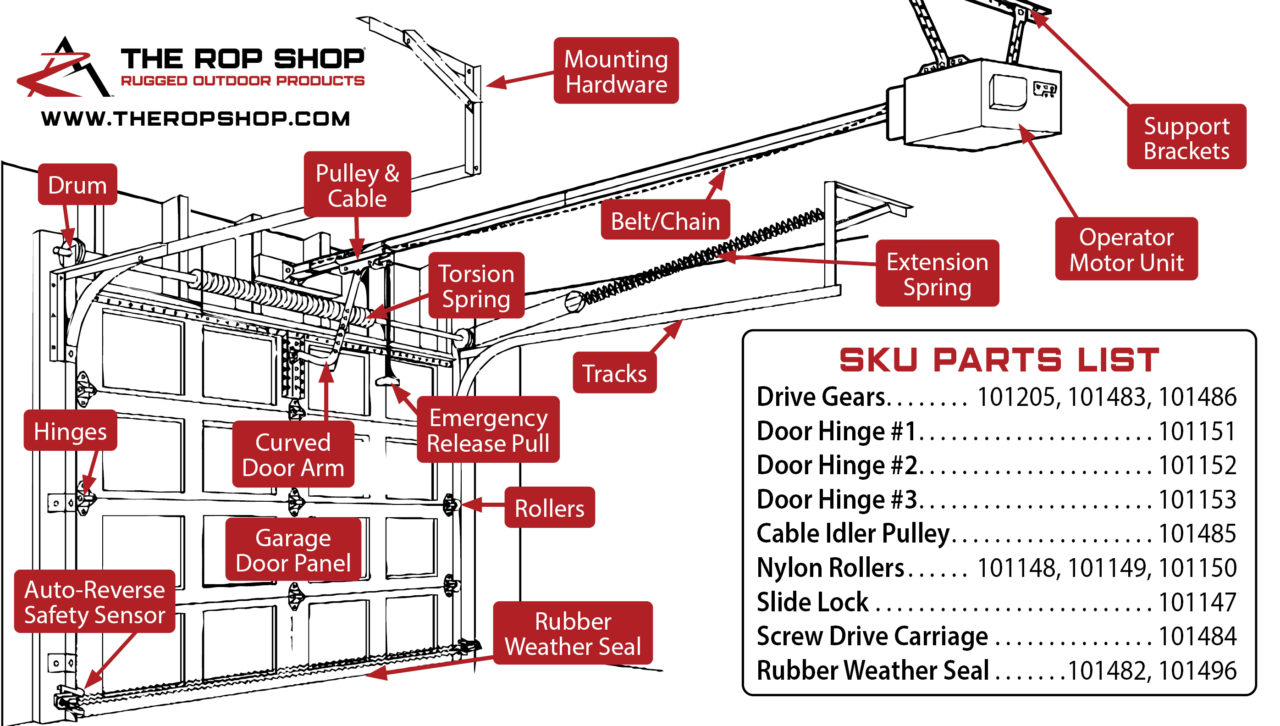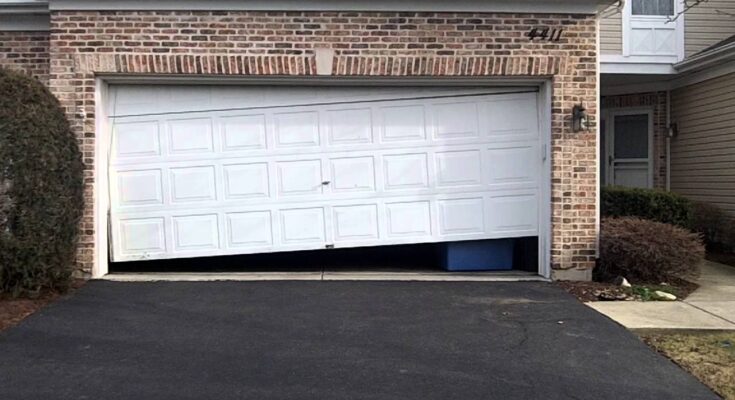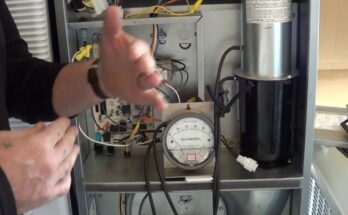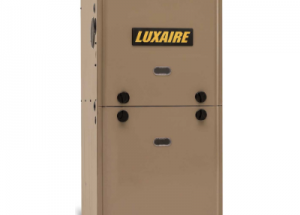Overhead door troubleshooting often involves checking for power issues or misaligned sensors. Regular maintenance can prevent many common problems.
Overhead doors are essential for security and convenience in homes and businesses. Proper functioning is crucial for daily operations. Common issues include power failures, sensor misalignment, or worn-out parts. Identifying the problem early can save time and repair costs. Regular maintenance, such as lubricating moving parts and checking electrical connections, ensures smooth operation.
Understanding the basic troubleshooting steps can help you address minor issues quickly. Always consult the manual or a professional for complex problems. This guide provides insights into typical overhead door issues and solutions to keep your door working efficiently.
Common Overhead Door Issues
Overhead doors are essential for garages. They provide security and ease of access. Yet, they can develop problems over time. Here, we explore some common issues you might face with overhead doors.
Noisy Operation
A noisy overhead door can be frustrating. Several factors can cause it to be loud:
- Loose Hardware: Check and tighten all bolts and screws.
- Worn Rollers: Replace old or damaged rollers with new ones.
- Insufficient Lubrication: Lubricate the moving parts regularly.
- Misaligned Tracks: Ensure the tracks are properly aligned.
Performing these checks can reduce noise significantly. Always use recommended lubricants for your overhead door.
Door Won’t Open Or Close
If the door won’t open or close, it can be a significant issue. Common reasons include:
- Power Source: Check if the opener is plugged in and the circuit breaker is not tripped.
- Remote Control: Verify the remote control batteries are working.
- Photo-Eye Sensor: Ensure the photo-eye sensors are aligned and clean.
- Broken Springs: Inspect the springs for any signs of breakage.
- Manual Lock: Check if the manual lock is engaged.
Addressing these issues can help restore your door’s function. Always exercise caution, especially with spring repairs.
Safety Precautions
Maintaining your overhead door ensures smooth operation and longevity. But, safety should always come first. Follow these safety precautions to avoid injuries and mishaps.
Disconnect Power
Always disconnect power before starting any troubleshooting. This prevents accidental activation of the door. Use the main power switch to cut off electricity. Secure the switch to ensure no one turns it back on by mistake.
Some systems have a manual release handle. Use this handle to disengage the door from the opener. This way, you can move the door manually without electrical risk. Never skip this step. It’s a vital safety measure.
Wear Protective Gear
Wearing protective gear is essential during maintenance. Use gloves to protect your hands from sharp edges. Safety glasses shield your eyes from debris and dust.
Consider wearing a hard hat in case of falling objects. Proper footwear with good grip helps prevent slips and falls. Always wear protective gear to keep yourself safe while working.
| Protective Gear | Purpose |
|---|---|
| Gloves | Protect hands from sharp edges |
| Safety Glasses | Shield eyes from debris |
| Hard Hat | Protect head from falling objects |
| Proper Footwear | Prevent slips and falls |
Tools Needed
Overhead door troubleshooting requires the right tools. Using the correct tools ensures safety and efficiency. This section will detail the necessary tools for effective troubleshooting.
Basic Hand Tools
Basic hand tools are essential for any overhead door repair. These tools are common and easy to find. Here’s a list of the basic hand tools you will need:
- Screwdrivers: Both flathead and Phillips types.
- Wrenches: Adjustable and fixed sizes.
- Pliers: Needle-nose and standard types.
- Hammer: A claw hammer is ideal.
- Level: To ensure parts are aligned properly.
- Tape Measure: For accurate measurements.
Specialized Equipment
Specialized equipment is also needed for more complex repairs. These tools might be less common but are crucial for detailed work:
| Tool | Purpose |
|---|---|
| Multimeter | Tests electrical components for continuity and voltage. |
| Spring Tensioner | Adjusts the tension of the door springs safely. |
| Cable Tensioner | Adjusts the tension of the door cables. |
| Lubricant Spray | Reduces friction in moving parts. |
| Safety Goggles | Protects eyes from debris and accidents. |
Having these tools on hand will make troubleshooting smoother. Always ensure your tools are in good condition. This will help you complete the task efficiently and safely.
:max_bytes(150000):strip_icc()/troubleshooting-common-garage-door-problems-1398186-07-88146eccb66945b597b39efed9d97918.jpg)
Credit: www.thespruce.com
Inspecting The Tracks
Inspecting the tracks is essential for overhead door troubleshooting. Tracks guide the door’s movement. Well-maintained tracks ensure smooth operation. Below, we dive into two critical steps: Cleaning the Tracks and Checking for Damage.
Cleaning The Tracks
Dirty tracks can cause the door to stick. Clean tracks regularly to prevent this. Follow these steps to clean the tracks effectively:
- Use a soft brush to remove debris.
- Wipe tracks with a damp cloth.
- Dry the tracks with a clean towel.
- Apply a silicone-based lubricant.
Regular cleaning maintains track efficiency. It also extends the door’s lifespan.
Checking For Damage
Damaged tracks can hinder door movement. Inspect tracks for any signs of damage. Look for these common issues:
| Issue | Sign | Action |
|---|---|---|
| Dents | Visible bends or dents | Straighten or replace the track |
| Misalignment | Tracks not parallel | Adjust the alignment |
| Rust | Corrosion spots | Remove rust or replace tracks |
Regular inspection prevents bigger issues. It ensures your overhead door operates smoothly.
Lubricating Moving Parts
Keeping your overhead door’s moving parts well-lubricated ensures smooth operation and longevity. Proper lubrication minimizes friction and prevents rust. Follow these tips to keep your door in top condition.
Best Lubricants
Choosing the right lubricant is crucial for optimal performance. Silicone-based lubricants are highly recommended. They do not attract dust and dirt. Lithium-based grease is another excellent option. It provides long-lasting lubrication and resists moisture.
| Lubricant Type | Benefits |
|---|---|
| Silicone-based | Dust-resistant, smooth application |
| Lithium-based | Long-lasting, moisture-resistant |
Lubrication Points
Knowing where to apply lubricant is essential. Focus on these key points:
- Hinges: Lubricate all hinges to ensure they move smoothly.
- Rollers: Apply lubricant to the rollers for quiet operation.
- Tracks: Lubricate the tracks to prevent any jamming.
- Springs: Keep the springs lubricated to maintain tension.
- Lock: A small amount of lubricant in the lock keeps it functional.
- Clean the areas before applying lubricant.
- Apply a small amount of lubricant to each part.
- Wipe away excess lubricant to prevent buildup.
- Operate the door a few times to distribute the lubricant.
Regular lubrication keeps your overhead door in excellent condition. It reduces the need for repairs and extends the door’s lifespan.

Credit: www.youtube.com
Adjusting The Sensors
Overhead doors rely on sensors for smooth operation. Proper sensor adjustment ensures safety and functionality. This guide helps you adjust your door sensors effectively.
Sensor Alignment
Sensors must align perfectly for the overhead door to work. Misalignment can cause the door to malfunction.
- Check both sensors on either side of the door.
- Ensure they face each other directly.
- Use a level to confirm they are at the same height.
- Tighten the screws to secure the sensors in place.
A small adjustment can make a big difference. Make sure the sensors’ indicator lights are on. If not, realign until both lights are steady.
Testing Sensor Function
Testing the sensors confirms they work properly. Follow these simple steps:
- Close the garage door using the remote.
- Place an object in the sensor’s path.
- Try closing the door again.
The door should reverse upon detecting the object. If it does, your sensors are functioning well. If not, recheck the alignment and clean the sensor lenses.
Dust and dirt can block the sensor’s beam. Use a soft cloth to wipe the lenses clean. Regular maintenance ensures long-term sensor performance.
Tightening Loose Hardware
Overhead doors are essential for many homes. They help secure garages and provide easy access. Over time, the hardware can become loose. Tightening loose hardware is crucial for the door’s performance and safety. This guide will help you identify loose parts and properly tighten them.
Identifying Loose Parts
To begin, you need to identify which parts are loose. Common areas include:
- Hinges
- Brackets
- Rollers
- Tracks
Look for visible gaps or movement in these parts. You can gently shake or wiggle them to check for looseness.
Use a flashlight to examine hard-to-see areas. Make a note of any loose parts you find.
Proper Tightening Techniques
Once you have identified the loose parts, it’s time to tighten them. Follow these steps:
- Gather your tools. You will need a wrench, screwdriver, and possibly a socket set.
- Ensure the door is in a closed position. This will prevent accidents.
- Start with the hinges. Use a screwdriver to tighten the screws.
- Next, check the brackets. Use a wrench to tighten any loose bolts.
- Examine the rollers. Use a socket set to tighten the nuts if needed.
- Finally, check the tracks. Ensure they are aligned and tighten any loose bolts.
Be careful not to over-tighten as this can strip the screws or damage the parts. Repeat this process regularly to maintain your overhead door.
By following these steps, you can ensure your overhead door operates smoothly and safely.
Replacing Worn-out Parts
Overhead doors experience wear and tear over time. Replacing worn-out parts is crucial for ensuring smooth operation. This guide helps you identify and replace these parts efficiently.
Identifying Worn Parts
Regular inspection is key. Look for signs of wear and damage. Key areas to check include:
- Springs: Check for rust, gaps, and wear.
- Rollers: Inspect for cracks and smooth movement.
- Hinges: Look for bends, cracks, and rust.
- Tracks: Check alignment and for obstructions.
Use a flashlight to inspect hard-to-see areas. Listen for unusual noises during operation.
Steps For Replacement
Follow these steps to replace worn parts:
- Gather Tools: You’ll need a wrench, pliers, and replacement parts.
- Disconnect Power: Unplug the door opener to ensure safety.
- Release Tension: Use a winding bar to release spring tension.
- Remove Old Parts: Unscrew and remove the worn components.
- Install New Parts: Fit and secure the new components.
- Reconnect Power: Plug in the door opener.
- Test Door: Operate the door to check for smooth movement.
Ensure all parts are securely fastened. Double-check all connections.
Maintaining your overhead door prolongs its lifespan. Regularly inspect and replace worn parts for optimal performance.
Professional Help
Overhead door issues can sometimes be too complex to handle alone. When DIY solutions don’t work, it’s best to seek professional help. Professionals have the expertise to diagnose and fix problems efficiently. This section will guide you on when to call a pro and how to choose a reliable technician.
When To Call A Pro
Some overhead door problems need professional intervention. Here are the scenarios:
- Broken Springs: These are dangerous to fix by yourself.
- Motor Issues: Complex motor problems require special tools.
- Track Misalignment: Misaligned tracks need expert adjustment.
- Sensor Malfunctions: Faulty sensors need precise calibration.
Choosing A Reliable Technician
Choosing the right technician is crucial. Here are some tips:
- Check Credentials: Ensure the technician is certified.
- Read Reviews: Online reviews can be very telling.
- Get Quotes: Compare quotes from multiple technicians.
- Ask Questions: Inquire about experience and warranties.
| Criteria | What to Look For |
|---|---|
| Experience | More than 5 years in the field. |
| Certifications | Proper licensing and certifications. |
| Availability | Quick response time. |
| Warranty | At least 1-year service warranty. |

Credit: theropshop.com
Frequently Asked Questions
How Do I Reset My Garage Door Overhead?
To reset your garage door overhead, locate the motor unit’s reset button. Press and hold it for 5 seconds. Release the button, then reprogram the remote control.
Why Is My Overhead Door Not Working?
Your overhead door may not work due to power issues, broken springs, misaligned sensors, or remote control problems. Check these components first.
How Do You Diagnose A Garage Door Opener Problem?
Check power source, inspect remote batteries, examine door tracks, test motor, and listen for unusual noises.
Why Won’t My Garage Door Open When I Push The Button?
Your garage door may not open due to a dead remote battery, misaligned sensors, or a malfunctioning motor. Check for obstructions and power issues.
Conclusion
Resolving overhead door issues can save time and money. Regular maintenance ensures smooth operation and longevity. By following these troubleshooting tips, you can address common problems effectively. Keep your overhead door in top shape to avoid future headaches. For complex issues, always consult a professional for the best results.



